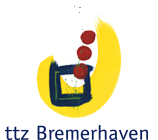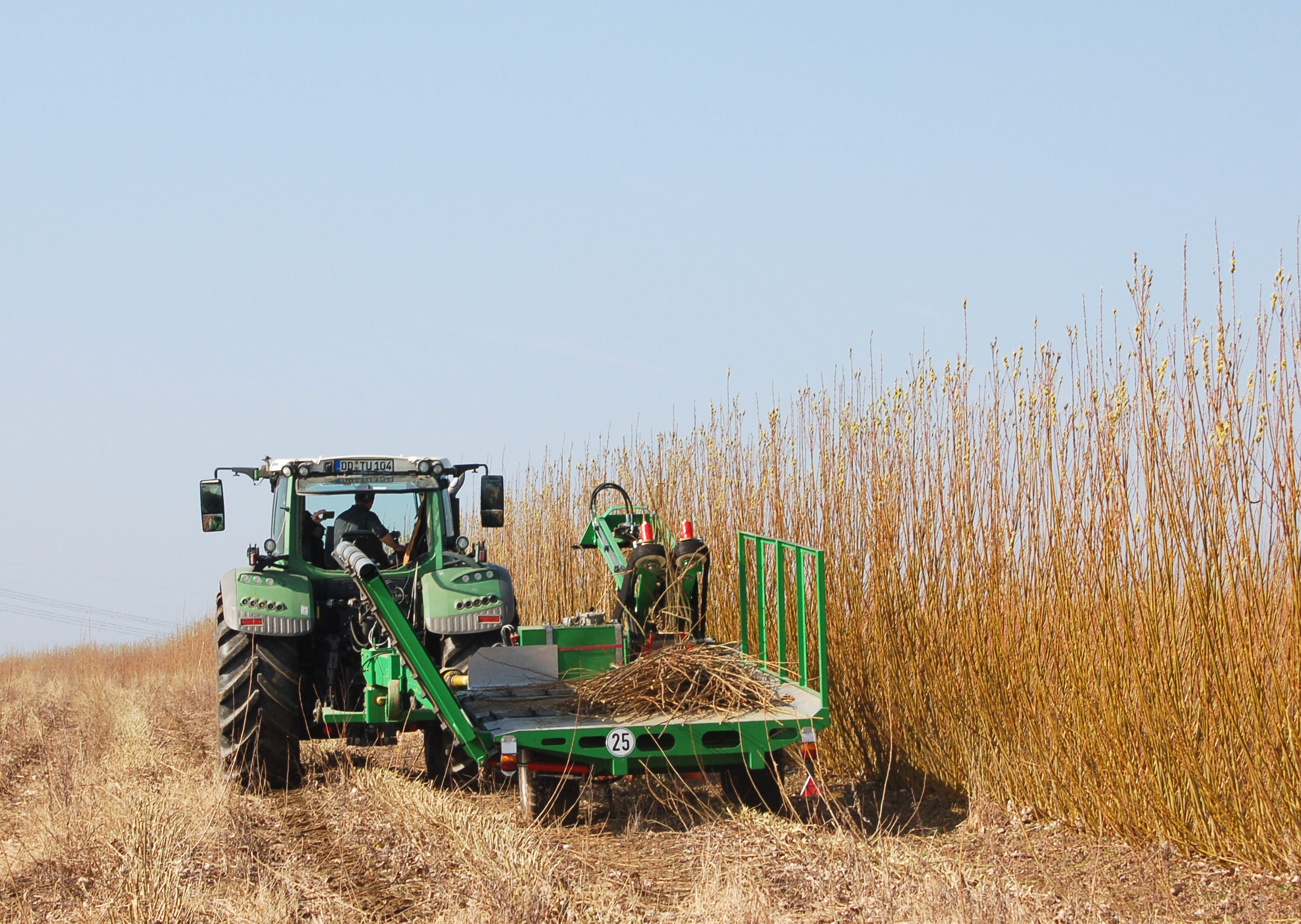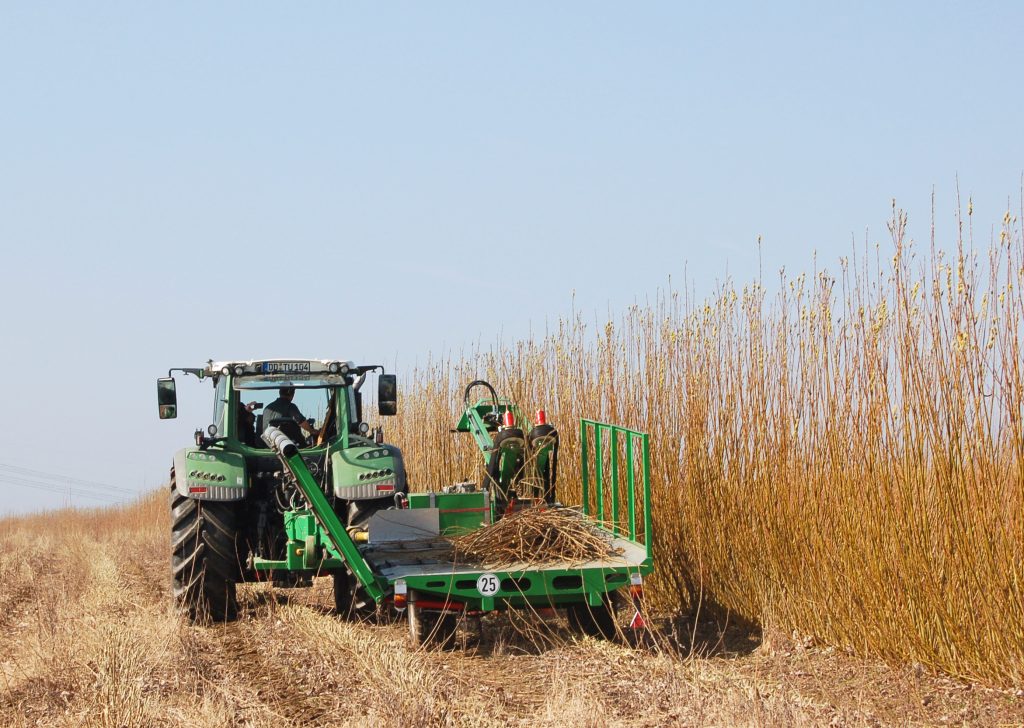An automated harvesting system for planting material for short rotation coppice (SRC) increases the cost efficiency of wood fuel production.
Bremerhaven, March 2015. Harvesting, sorting, bundling, packaging: Until now the production of planting material (cuttings) for the breeding of willow and poplar was an expensive and hard manual work. As a result the production of renewable energy from wood got under pressure in economical perspectives. The EU-funded research project ROD PICKER has now completed the remedy. The harvesting and processing of plant material from nurseries could be automated with the development of a new technology. By the use of the system the staff employment is reduced by more than two-thirds
European countries have a great potential for SRC. However, the technical possibilities as well as costs for breeding were limiting the appropriate supply of enough planting material. The automation and optimization of the cutting of the rods in the field and their processing (sorting, bundling, packaging) was the aim of the ROD-PICKER project, as providing of these rods and cuttings is still a hindrance for the development of the sector: linked to intensive manual labor and inconsistent quality standards. In order to accommodate economic and technical receivables the ROD-PICKER consortium has developed an efficient and complete system, which includes several steps from the field to the delivery. Given the varying working speeds of different stages it was necessary to divide the system into two sections: the harvesting unit and the sorting and bundling unit.
The harvesting module
The system developed for harvesting and processing of planting material from nurseries for the plantations is divided into two subsystems, a harvester and a sorting and bundling unit. The first step of harvesting is realized by two saw blades at the ground level and optionally one top cutter (sickle bar) which represents a preliminary working step. As a second step downstream transmission belts transport the cut off rods to the included platform of the harvester. In comparison with “normal” SRC-harvester it has to be mentioned that the difficulty of harvesting planting material is the necessity of careful handling of rods. With a harvesting speed of up to 13 km/h (3,6 m/s) and a movable platform, which optimizes the arrangement of the harvest on the platform with ca. 3,8 m length and 2,6 m width the ROD-PICKER harvester can load up to 1.000 kg of harvested rods which equals – depending on the plant spacing – several hundred meters of willow or poplar rows. In principle also other species with a diameter up to 80 mm can be harvested, so the harvester is also suitable for other species used in short rotation plantations. After the payload limit is reached a side gate with integrated unloading belts can be used for depositing the rods, The harvester was designed and built as a two-wheel trailer with a swing gear which can swivel out for harvesting action, so that the harvesting unit is offset to the lane of the pulling tractor. To operate the system the maximum PTO (Power Take-Off) of the unit has to be 36 kW, a suitable towing vehicle should have a power of 60 kW in minimum which is very low in comparison with other harvester for “normal” SRC-harvesting. Users of the harvester can use a remote control in the driver’s cab to operate the machine and handle the rods.
The sorting and bundling unit
Due to the fact that the planting material has to fulfill different quality characteristics (e.g. requirements according to directive EU – 1999/105 for reproductive material) the harvested rods are processed after harvesting. Parameters like diameter (defined range 7 – 25 mm), length (defined range 1.200 – 2.300 mm), the straight shape as well as absence of branches can be measured by the unit, so it can be guaranteed that the resulting product fulfills these criteria. The maximum manageable possible diameter of rods is 30 mm, while the length of rods doesn’t represent a limitation to the process. In a first step, each rod goes through a cutting subunit with two knives and sensor/camera-technology, where the machine detects and sorts out damaged or multiple branched rods and cuts them off. Processed rods with diameters within the defined range and simultaneous suitable length are transported to a compressed air mechanism which ensures that sale-worthy rods are pushed to a second parallel arranged band conveyor. If a number of rods (defined by the farmer) is reached the second band-conveyor moves the loose rods forward to the bundling unit. Being fastened two or three times, the final product can be packaged. The working speed of the sorting and bundling unit is one box per day and sorting line which equals an accumulated rod-length of 6.000 m. An advantage of the unit is that it just requires one or two workers to operate. The sorting and bundling unit consists of bought standard parts and parts designed exclusively for this machine.
Conclusion
The involved companies EGEDAL MASKINFABRIK A/S (Danmark), SALIXENERGI EUROPE AB (Sweden) and LEMPE GBR (Germany) will market the development in the future. The research institutions of the project, the TECHNISCHE UNIVERSITÄT DRESDEN (Germany), UNIVERSITATEA POLITEHNICA DIN TIMISOARA (Romania) and the ttz Bremerhaven (Germany), evaluated the technical operation of the prototype. Furthermore economic and ecological analyses have shown advantages for the potential user. Besides the practical realization the regulatory framework as well as a sustainability assessment, consisting of a life cycle assessment, social and economic assessment, were examined.
For further information and a video of the harvester on-site the official project website http://rod-picker.eu can be checked. The ROD-PICKER project has received funding from the European Union’s Seventh Framework Programme managed by RES – Research Executive Agency (http://ec.europa.eu/research/rea (FP7/2007-2013)) under grant agreement n° [315416]. It started in October 2012 and had a project duration of two years.
Further Information on this Project:
- Harvesting system for SRC-nurseries in the practical test
- Grüne Energie für Europa (only available in German)
- Harvesting trees at the push of a button
- Project ROD PICKER
Press pictures for editorial use (foto: ttz/pr)
Captions:
Picture 1: “ROD-PICKER harvesting unit while harvesting of one year old willows during testing phase.“
Picture: ttz Bremerhaven
Download with right mouse button: “Save as…”
ttz Bremerhaven is an innovative provider of research services and operates in the field of application-oriented research and development. Under the umbrella of ttz Bremerhaven, an international team of experts is working in the areas of food, environment and health. For more than 25 years, we help companies of different sizes with the planning and realization of innovative projects and the acquisition of suitable funding on national and European level. www.ttz-bremerhaven.de/en





